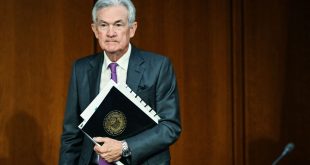On Tuesday, April 15, 2025, U.S. Treasury yields experienced a notable decline, reflecting heightened volatility in financial markets during the second day of the new trading week. This dip follows a turbulent period marked by trade tensions that shook global markets, threatening the long-standing status of U.S. Treasury bonds as a safe-haven asset. Investors are now grappling with uncertainty, as speculation mounts about potential foreign sell-offs driving the recent fluctuations.
Last week, yields on 10-year U.S. Treasury notes surged by approximately 50 basis points due to intense selling pressure, which significantly depressed bond prices. The inverse relationship between bond prices and yields became starkly evident, as plummeting prices across various maturities fueled record-breaking yield spikes. By Tuesday, the 10-year Treasury yield had fallen to 4.334%, down from Monday’s close of 4.378%. Throughout the day, yields fluctuated, peaking at 4.410% and dipping to a low of 4.309%.
The previous week saw 10-year Treasury yields climb to their highest levels since 2001, surpassing 4.500%, while 30-year Treasury yields reached a 43-year peak. These dramatic increases have sparked concerns about the sustainability of such elevated yields, which place a heavier burden on the U.S. Treasury. Market observers are increasingly pointing to foreign investors as a possible catalyst for the sell-off. Historically, large foreign holdings of U.S. Treasuries have been a source of anxiety for American policymakers, who fear that mass selling could erode bond values and drive yields even higher.
Among foreign holders, China stands out as the second-largest owner of U.S. Treasury bonds globally. Speculation is rife that Beijing might leverage its holdings as a strategic tool, potentially offloading bonds in response to trade tariffs imposed by the Trump administration on Chinese exports. Such a move could further destabilize bond markets, amplifying volatility and raising questions about the future resilience of U.S. Treasuries as a cornerstone of global finance.
As markets navigate these choppy waters, all eyes remain on the interplay between geopolitical tensions, foreign investment decisions, and the trajectory of U.S. Treasury yields.

 Noor Trends News, Technical Analysis, Educational Tools and Recommendations
Noor Trends News, Technical Analysis, Educational Tools and Recommendations




